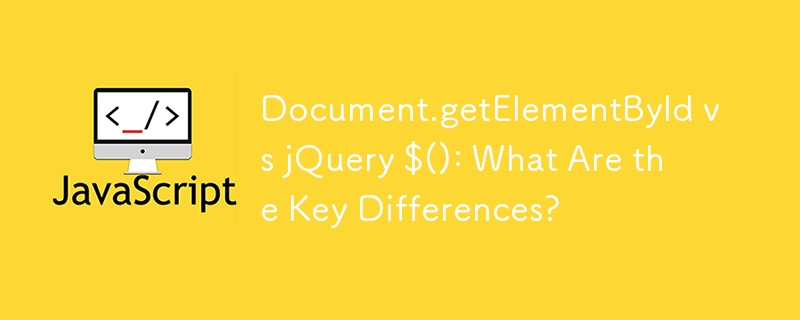

Document.getElementById vs jQuery $(): A Comparative Analysis
When delving into the realm of web development, understanding the nuances between vanilla JavaScript and jQuery can be crucial. This article examines the subtle differences between two seemingly identical code snippets:
var contents = document.getElementById('contents');
var contents = $('#contents');Often assumed to be equivalent, their subtle variations can lead to crucial distinctions in their functionality.
Core Differences
Practical Applications
While both methods serve the same purpose of referencing HTML elements, their variations become apparent in specific scenarios:
Conclusion
While both document.getElementById and jQuery $() can be used to access elements, their fundamental distinctions in return type and functionality become evident in specific use cases. jQuery's rich API and cross-platform adaptability make it a compelling choice for complex web applications, while vanilla JavaScript remains a viable option for simpler projects.
Ce qui précède est le contenu détaillé de. pour plus d'informations, suivez d'autres articles connexes sur le site Web de PHP en chinois!
 Comment résoudre l'opération expirée
Comment résoudre l'opération expirée
 Quel est le principe de fonctionnement et le processus de mybatis
Quel est le principe de fonctionnement et le processus de mybatis
 Quelles versions du système Linux existe-t-il ?
Quelles versions du système Linux existe-t-il ?
 Quelles sont les utilisations des slots vue.js ?
Quelles sont les utilisations des slots vue.js ?
 Comment implémenter la fonction de pagination jsp
Comment implémenter la fonction de pagination jsp
 cas où l'utilisation de SQL
cas où l'utilisation de SQL
 Java
Java
 Le système d'exploitation Hongmeng de Huawei est-il Android ?
Le système d'exploitation Hongmeng de Huawei est-il Android ?